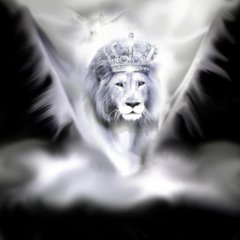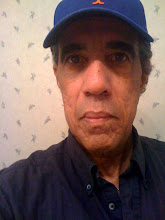
'Monster Mash' Singer Pickett Dies at 69
By LARRY McSHANE
NEW YORK (AP) - He does the "Monster Mash" no more. Bobby "Boris" Pickett, whose dead-on Boris Karloff impression propelled the Halloween anthem to the top of the charts in 1962, making him one of pop music's most enduring one-hit wonders, has died of leukemia. He was 69.
Pickett, dubbed "The Guy Lombardo of Halloween," died Wednesday night at the West Los Angeles Veterans Hospital, said his longtime manager, Stuart Hersh. His daughter, Nancy, and his sister, Lynda, were at Pickett's bedside.
"Monster Mash" hit the Billboard chart three times: when it debuted in 1962, reaching No. 1 the week before Halloween; again in August 1970, and for a third time in May 1973. The resurrections were appropriate for a song where Pickett gravely intoned the forever-stuck-in-your-head chorus: "He did the monster mash. ... It was a graveyard smash."
The novelty hit's fans included Bob Dylan, who played the single on his XM Satellite Radio program last October. "Our next artist is considered a one-hit wonder, but his one hit comes back year after year," Dylan noted.
The hit single ensured Pickett's place in the pantheon of pop music obscurities, said syndicated radio host Dr. Demento, whose long-running program celebrates offbeat tunes.
"It's certainly the biggest Halloween song of all time," said Demento. The DJ, who interviewed Pickett last year, said he maintained a sense of humor about his singular success: "As he loved to say at oldies shows, 'And now I'm going to do a medley of my hit.'"
Pickett's impression of Karloff (who despite his name was an Englishman, born William Henry Pratt) was forged in Somerville, Mass., where the boy watched horror films in a theater managed by his father.
Pickett used the impersonation in a nightclub act and when performing with his band the Cordials. A bandmate convinced Pickett they needed to do a song to showcase the Karloff voice, and "Monster Mash" was born - "written in about a half-hour," said Dr. Demento.
The recording, done in a couple of hours, featured a then-unknown piano player named Leon Russell and a backing band christened The Crypt-Kickers. It was rejected by four major labels before Gary Paxton, lead singer on the Hollywood Argyles' novelty hit "Alley Oop," released "Monster Mash" on his own label.
The instant smash became a sort-of Christmas carol for the pumpkin and ghoul set. In a 1996 interview with People magazine, Pickett said he never grew tired of it: "When I hear it, I hear a cash register ringing."
While Pickett never re-created its success, his "Monster's Holiday," a Christmas follow-up, reached No. 30 in December 1962. And "Graduation Day" hit No. 80 in June 1963.
He continued performing through his final gig in November. He remained in demand for Halloween performances, including a memorable 1973 show where his bus broke down outside Frankenstein, Mo.
Beside his daughter and sister, Pickett is survived by two grandchildren.
Well, another legend leaves us for the other side. However, NOBODY will ever forget the "Monster Mash"! Brings back a lot of memories for a lot of people I'm sure. Show them how to do the "MM" in the soul plain Bobby! Boris Karloff would be proud of you.
Peace & Soulz,
Bobby Sharpe www.myspace.com/akuasharpe BobbySharpe.blogspot.com
By LARRY McSHANE
NEW YORK (AP) - He does the "Monster Mash" no more. Bobby "Boris" Pickett, whose dead-on Boris Karloff impression propelled the Halloween anthem to the top of the charts in 1962, making him one of pop music's most enduring one-hit wonders, has died of leukemia. He was 69.
Pickett, dubbed "The Guy Lombardo of Halloween," died Wednesday night at the West Los Angeles Veterans Hospital, said his longtime manager, Stuart Hersh. His daughter, Nancy, and his sister, Lynda, were at Pickett's bedside.
"Monster Mash" hit the Billboard chart three times: when it debuted in 1962, reaching No. 1 the week before Halloween; again in August 1970, and for a third time in May 1973. The resurrections were appropriate for a song where Pickett gravely intoned the forever-stuck-in-your-head chorus: "He did the monster mash. ... It was a graveyard smash."
The novelty hit's fans included Bob Dylan, who played the single on his XM Satellite Radio program last October. "Our next artist is considered a one-hit wonder, but his one hit comes back year after year," Dylan noted.
The hit single ensured Pickett's place in the pantheon of pop music obscurities, said syndicated radio host Dr. Demento, whose long-running program celebrates offbeat tunes.
"It's certainly the biggest Halloween song of all time," said Demento. The DJ, who interviewed Pickett last year, said he maintained a sense of humor about his singular success: "As he loved to say at oldies shows, 'And now I'm going to do a medley of my hit.'"
Pickett's impression of Karloff (who despite his name was an Englishman, born William Henry Pratt) was forged in Somerville, Mass., where the boy watched horror films in a theater managed by his father.
Pickett used the impersonation in a nightclub act and when performing with his band the Cordials. A bandmate convinced Pickett they needed to do a song to showcase the Karloff voice, and "Monster Mash" was born - "written in about a half-hour," said Dr. Demento.
The recording, done in a couple of hours, featured a then-unknown piano player named Leon Russell and a backing band christened The Crypt-Kickers. It was rejected by four major labels before Gary Paxton, lead singer on the Hollywood Argyles' novelty hit "Alley Oop," released "Monster Mash" on his own label.
The instant smash became a sort-of Christmas carol for the pumpkin and ghoul set. In a 1996 interview with People magazine, Pickett said he never grew tired of it: "When I hear it, I hear a cash register ringing."
While Pickett never re-created its success, his "Monster's Holiday," a Christmas follow-up, reached No. 30 in December 1962. And "Graduation Day" hit No. 80 in June 1963.
He continued performing through his final gig in November. He remained in demand for Halloween performances, including a memorable 1973 show where his bus broke down outside Frankenstein, Mo.
Beside his daughter and sister, Pickett is survived by two grandchildren.
Well, another legend leaves us for the other side. However, NOBODY will ever forget the "Monster Mash"! Brings back a lot of memories for a lot of people I'm sure. Show them how to do the "MM" in the soul plain Bobby! Boris Karloff would be proud of you.
Peace & Soulz,
Bobby Sharpe www.myspace.com/akuasharpe BobbySharpe.blogspot.com











.jpg)







